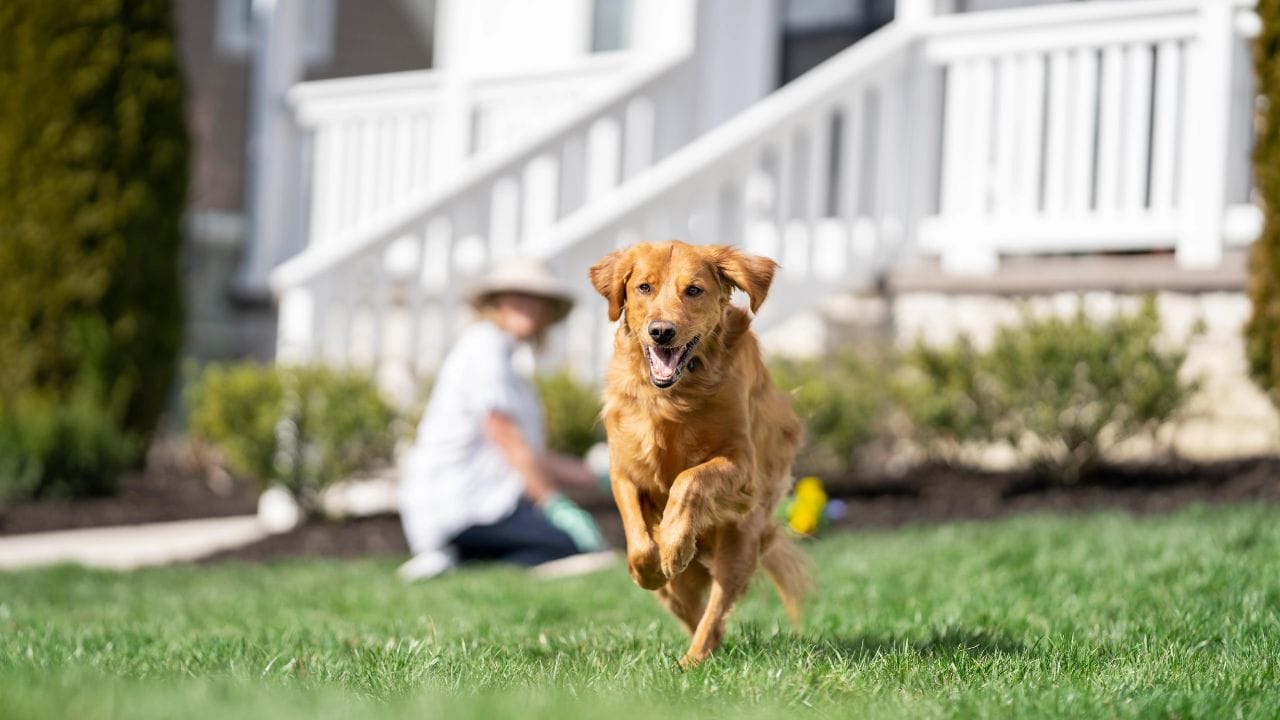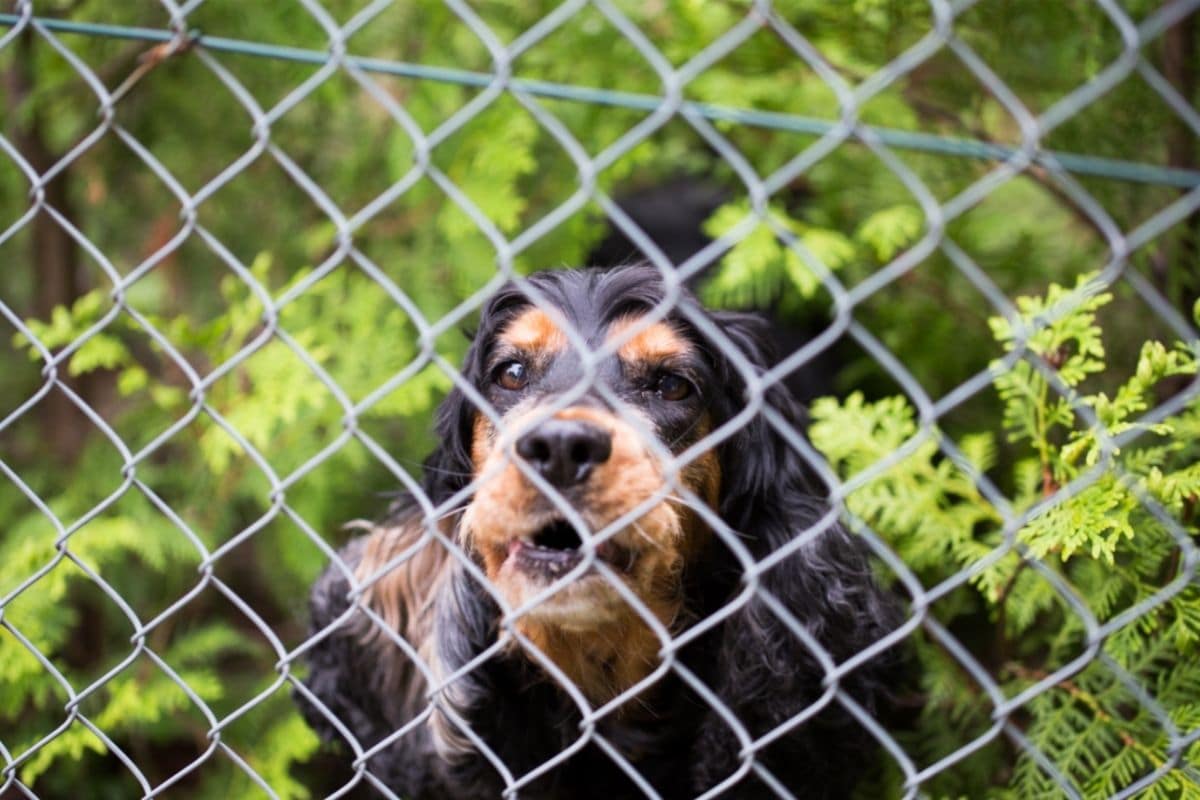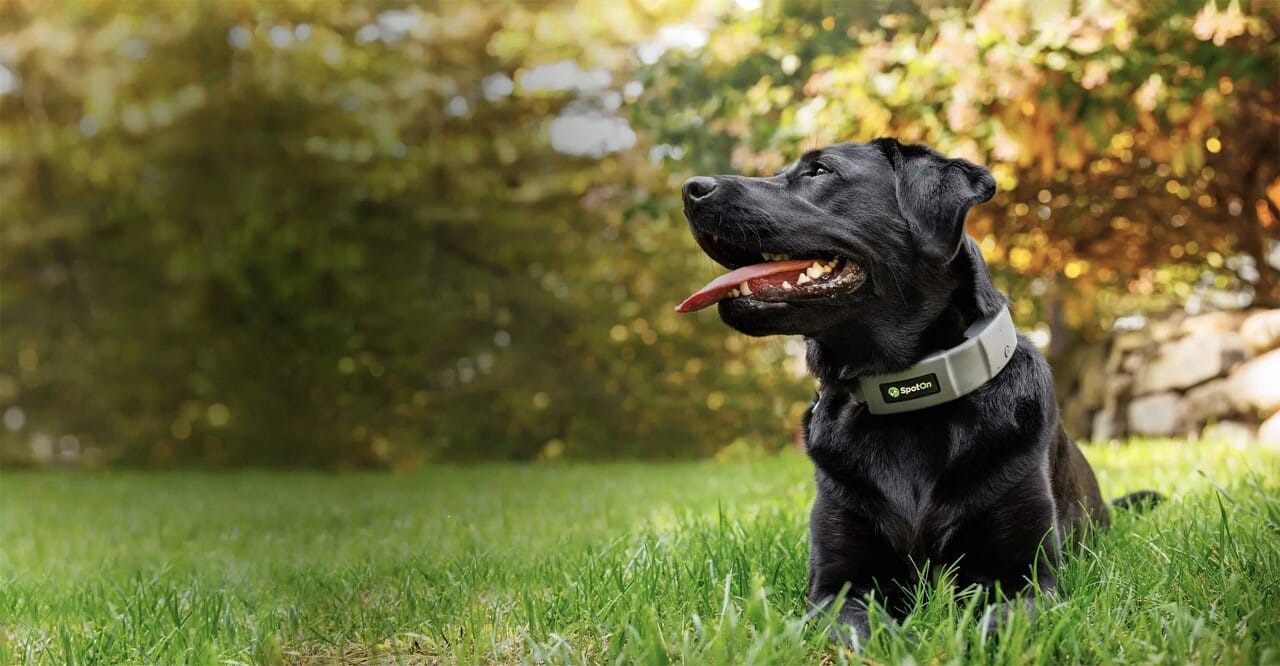Electric fences for dogs are becoming an increasingly popular option for pet owners who want to keep their dogs safe and secure. These fences use a mild electric shock to create a barrier that keeps dogs within a certain area, and they can be a great solution for dogs who tend to wander or escape from traditional fences. However, electric fences can also be controversial, and it's important to understand how they work and how to use them safely.

Understanding Electric Fences for Dogs Electric fences for dogs work by creating a boundary that dogs are trained not to cross. The fence consists of a wire that is buried underground or attached to posts around the perimeter of the designated area. The wire carries a low-voltage electric current that is activated when a special collar worn by the dog approaches the boundary. The collar emits a warning tone, and if the dog continues to move closer to the boundary, it receives a mild electric shock.
Key Components of an Electric Fence System To set up an electric fence for dogs, you'll need a few key components. The fence wire is the most important part of the system, as it creates the boundary that the dog must learn not to cross. You'll also need a transmitter that sends the signal to the wire, and a receiver collar that the dog wears. Some systems also include flags that are placed around the perimeter of the boundary to help the dog learn where the boundary is located.
Key Takeaways
- Electric fences for dogs use a mild electric shock to create a boundary that dogs are trained not to cross.
- To set up an electric fence, you'll need a fence wire, transmitter, receiver collar, and possibly flags.
- Proper training and safety precautions are important when using an electric fence for dogs.
Understanding Electric Fences for Dogs
Electric fences for dogs have become increasingly popular over the years due to their effectiveness in keeping dogs contained within a specific area. These fences work by creating an invisible barrier that the dog cannot cross without receiving a mild electric shock. In this section, we will discuss the types of electric dog fences, how they work, and the benefits of using them over traditional fences.

Types of Electric Dog Fences
There are two main types of electric dog fences: in-ground and wireless. In-ground fences consist of a buried wire that creates a boundary around the designated area. The dog wears a collar that emits a warning beep when they approach the boundary and a mild electric shock if they attempt to cross it. Wireless fences, on the other hand, use a transmitter to create a circular boundary around the designated area. The dog wears a collar that emits a warning beep when they approach the boundary and a mild electric shock if they attempt to cross it.
How Electric Dog Fences Work
Electric dog fences work by using a transmitter that sends a signal to the collar the dog wears. When the dog approaches the boundary of the designated area, the collar emits a warning beep. If the dog continues to approach the boundary, they will receive a mild electric shock. The shock is not harmful to the dog, but it is enough to deter them from crossing the boundary.
Benefits of Electric Fences Over Traditional Fences
There are several benefits to using electric fences over traditional fences. First, electric fences are less expensive than traditional fences. Second, electric fences are less visible than traditional fences, which can be beneficial if you live in an area with strict homeowner association rules. Third, electric fences are more effective at keeping dogs contained within a specific area than traditional fences. Finally, electric fences do not obstruct views, which can be beneficial if you have a scenic view from your property.
In conclusion, electric fences for dogs are an effective way to keep dogs contained within a specific area. They come in two main types: in-ground and wireless. They work by creating an invisible barrier that the dog cannot cross without receiving a mild electric shock. The benefits of using electric fences over traditional fences include cost-effectiveness, visibility, effectiveness, and unobstructed views.
Key Components of an Electric Fence System
An electric fence system for dogs consists of three main components: a transmitter, a boundary wire or wireless system, and a receiver collar. Each component plays a crucial role in ensuring the fence system works effectively to keep your dog safe and contained.
Transmitter
The transmitter is the central unit that sends a signal through the boundary wire or wireless system to the receiver collar worn by your dog. The transmitter is typically installed indoors and plugged into a power outlet. It is responsible for creating a safe and effective boundary that your dog cannot cross.
Boundary Wire and Wireless Systems
The boundary wire or wireless system is what creates the perimeter of the fence. The boundary wire is a physical wire that is buried underground or attached to an existing fence. The wireless system uses radio waves to create a circular boundary around the transmitter. Both systems work by sending a signal to the receiver collar when your dog approaches the boundary, triggering a correction to deter them from crossing.

Receiver Collar and Correction Levels
The receiver collar is worn by your dog and receives the signal from the transmitter through the boundary wire or wireless system. The collar is equipped with contact points that touch your dog's skin, delivering a static correction when they approach the boundary. The correction levels can be adjusted to suit your dog's temperament and sensitivity, ensuring they are deterred from crossing the boundary without causing harm.
In addition to these key components, it is important to consider the collar battery life and the range of the wireless electric fence if you opt for a wireless system. By understanding the function and purpose of each component, you can make an informed decision when selecting an electric fence system for your dog.
Installation and Setup
Installing the Boundary Wire
Before installing the electric fence for dogs, it is important to plan and prepare the boundary line. The user manual provides clear instructions on how to install the boundary wire. The wire should be buried a few inches underground or attached to an existing fence. It is recommended to mark the boundary line with flags to ensure accuracy during installation.
Setting Up the Transmitter
The transmitter is the heart of the electric dog fence system. It is important to choose a central location for the transmitter that is dry and well-ventilated. The user manual provides clear instructions on how to set up the transmitter. It is important to plug the transmitter into a surge protector to prevent damage from power surges.
Fitting the Receiver Collar
The receiver collar is worn by the dog and receives signals from the boundary wire. It is important to fit the collar properly to ensure proper functioning of the electric fence for dogs. The user manual provides clear instructions on how to fit the collar. It is important to check the fit of the collar regularly to ensure it is not too loose or too tight.
In summary, installing and setting up an electric fence for dogs requires careful planning and attention to detail. Following the user manual and using a surge protector can help ensure proper functioning of the system. Fitting the receiver collar properly is also important for the safety and comfort of the dog.

Training Your Dog
Training your dog to respect the boundaries set by an electric fence is essential to ensure their safety. Here are some tips to help you train your dog effectively.
Importance of Boundary Training
Before introducing your dog to the electric fence, it is important to train them on basic boundary training. This involves teaching your dog to recognize and respect boundaries without the use of the electric fence. This will make it easier for your dog to understand the purpose of the electric fence and avoid unnecessary shocks.
Using Positive Reinforcement
Positive reinforcement is an effective way to train your dog to respect the electric fence. Reward your dog with treats and praise when they obey the warning beep or stay within the warning zone. This will encourage your dog to associate good behavior with positive outcomes.
Adjusting Correction Levels to Temperament
Each dog has a unique temperament, and it is important to adjust the correction levels of the electric fence to match their personality. Some dogs are more sensitive and require lower correction levels, while others may require higher levels to deter them from crossing the boundary.
It is also recommended to start with the tone-only mode for a few days to allow your dog to become familiar with the warning beep. This will help them understand the consequences of crossing the boundary without the need for a correction.
By following these tips, you can train your dog to respect the boundaries set by the electric fence and keep them safe from harm.
Safety and Reliability
Ensuring Safe Containment
Electric fences for dogs are designed to keep dogs within a designated containment area while ensuring their safety and well-being. The safety of the dog is of utmost importance, and the electric fence must be properly installed and maintained to ensure safe containment. Before installing an electric fence, it is important to assess the dog's temperament and behavior to determine if an electric fence is the right solution for them.
Maintaining Reliable Operation
Reliability is a crucial factor when it comes to electric fences for dogs. A reliable electric fence will ensure that the dog remains safely within the containment area. It is important to regularly check the fence for any signs of damage or malfunction. The battery backup should also be checked regularly to ensure that the fence remains operational during power outages.
Understanding and Avoiding Risks
While electric fences for dogs are generally safe and humane, there are some risks associated with their use. Dogs may experience pain or fear if they receive a shock from the fence. To avoid this, it is important to train the dog properly and use the fence as directed. It is also important to ensure that the fence is not set to a high level of intensity, which can cause unnecessary pain and fear.
Overall, electric fences for dogs can be a safe and effective way to contain a dog within a designated area. However, it is important to ensure that the fence is properly installed and maintained, and that the dog is trained to use the fence safely. By following these guidelines, dog owners can provide a safe and humane containment solution for their furry friends.
Cost Considerations

Comparing Prices of Different Systems
When considering an electric fence for dogs, it is important to compare prices of different systems. The cost of an electric fence can vary depending on the brand, type, and features. Some electric fences require professional installation, which can add to the cost.
Wireless electric fences tend to be more expensive than wired systems. However, wireless systems are easier to install and more portable. Wired systems, on the other hand, require more installation work but are generally more reliable.
When comparing prices, it is important to consider the features of each system. Some systems come with additional features such as remote control, adjustable correction levels, and rechargeable batteries. These features can add to the cost but may be worth it for some dog owners.
Long-Term Cost Effectiveness
While the initial cost of an electric fence may seem high, it can be a cost-effective solution in the long run. Electric fences do not require ongoing maintenance or replacement, unlike traditional fences which may need repairs or replacement over time.
Electric fences also do not require the same level of upkeep as other dog containment options such as kennels or dog runs. This can result in significant savings over time.
Additional Costs for Multiple Dogs
For dog owners with multiple dogs, the cost of an electric fence can increase. Additional collars and receivers may be required for each dog, adding to the overall cost. However, some systems offer the option to purchase additional collars at a discounted price.
It is important to consider the cost of additional collars and receivers when choosing an electric fence for multiple dogs. Some systems may offer a better value for dog owners with multiple pets.
Overall, the cost of an electric fence for dogs can vary depending on the brand, type, and features. It is important to compare prices and consider long-term cost effectiveness when choosing a system. For dog owners with multiple dogs, additional costs for collars and receivers should also be taken into account.

Choosing the Right System
When it comes to choosing an electric fence for your dog, there are a few things to consider to ensure you select the right system for your needs. Here are some things to keep in mind:
Selecting for Your Dog's Size and Breed
One of the most important factors to consider when selecting an electric fence for your dog is the size and breed of your furry friend. Larger dogs may require a more powerful system, while stubborn breeds may need a system with stronger correction levels. Additionally, wireless dog fences may be more suitable for smaller dogs, while wired fences may be better for larger dogs with more space to roam.
Assessing Features and Brands
Another important consideration is the features and brands available. Some electric fences come with additional features such as remote training capabilities or rechargeable batteries. It's important to assess your needs and your dog's behavior to determine which features are necessary. Additionally, researching different brands can help you make an informed decision based on factors such as reliability, customer service, and warranty.
Reading Customer Reviews
Finally, reading customer reviews can provide valuable insight into the effectiveness and reliability of different electric fence systems. Look for reviews from pet owners who have dogs similar in size and breed to your own, as well as reviews from those who have had experience with the brand and features you are considering.
Overall, selecting the right electric fence for your dog requires careful consideration of your pet's size and breed, the features and brands available, and customer reviews. By taking the time to research and assess your options, you can find a pet fence that provides a safe and effective solution for keeping your furry friend contained.
Alternatives to Electric Fences
While electric fences are a popular option for pet containment, there are several alternatives available for dog owners. Here are two alternatives that can be considered:

Physical Fences and Their Limitations
Physical fences are a popular option for pet containment. They are available in various materials such as wood, vinyl, chain link, and aluminum. Physical fences can be installed around the designated perimeter of the property, providing a secure and safe area for dogs to play and exercise.
However, physical fences have their limitations. They can be expensive to install and maintain. If a dog is a good digger or jumper, they may be able to escape the fenced area. Additionally, physical fences can obstruct the view and aesthetics of the property.
Other Containment Options
GPS wireless dog fences are another alternative to electric fences. These systems use a GPS signal to create a designated perimeter for the dog. When the dog approaches the boundary, the collar emits a warning sound, followed by a static correction if the dog continues to move towards the boundary.
Pet containment systems are also an option for dog owners. These systems use radio signals to create a designated perimeter. When the dog approaches the boundary, the collar emits a warning sound, followed by a static correction if the dog continues to move towards the boundary.
While these alternatives may have their limitations, they can be a suitable option for dog owners who do not wish to use electric fencing. It is important to consider the specific needs of the dog and the property before selecting a pet containment system.

Frequently Asked Questions
- What are the typical costs associated with installing an electric fence for dogs?
- The cost of installing an electric fence for dogs can vary depending on several factors, including the size of the area to be fenced, the type of electric fence chosen, and the complexity of the installation process. On average, the cost of installing an electric fence for dogs can range from $200 to $2,500.
- What are the key differences between in-ground and above-ground electric fences for dogs?
- In-ground electric fences for dogs are typically buried underground and are invisible to the naked eye, while above-ground electric fences use visible wires or flags to mark the boundary. In-ground fences are usually more expensive to install, but they offer a more aesthetically pleasing option for homeowners. Above-ground fences, on the other hand, are typically less expensive and easier to install.
- How do I choose the best electric fence for my dog's specific needs?
- When choosing an electric fence for your dog, consider the size and breed of your dog, the size of your yard, and any specific needs your dog may have. It's important to choose a fence that is appropriate for your dog's size and temperament, and that provides a safe and effective means of containment.
- Are there electric fence options suitable for small dog breeds?
- Yes, there are electric fence options that are suitable for small dog breeds. It's important to choose a fence that is appropriate for your dog's size and temperament, and that provides a safe and effective means of containment.
- What should I look for when purchasing an electric fence collar for my dog?
- When purchasing an electric fence collar for your dog, look for a collar that is appropriate for your dog's size and temperament, and that provides a safe and effective means of containment. It's important to choose a collar that is comfortable for your dog to wear and that has adjustable settings to ensure that the correction level is appropriate for your dog.
- How can I effectively train my dog to understand and respect an electric fence boundary?
- To effectively train your dog to understand and respect an electric fence boundary, it's important to start with a clear understanding of the training process and to follow a consistent and structured training program. This may involve gradually introducing your dog to the fence boundary, using positive reinforcement to encourage your dog to stay within the boundary, and providing clear and consistent correction when your dog crosses the boundary. It's important to work with a professional trainer or consult with a veterinarian to ensure that you are using safe and effective training methods.





